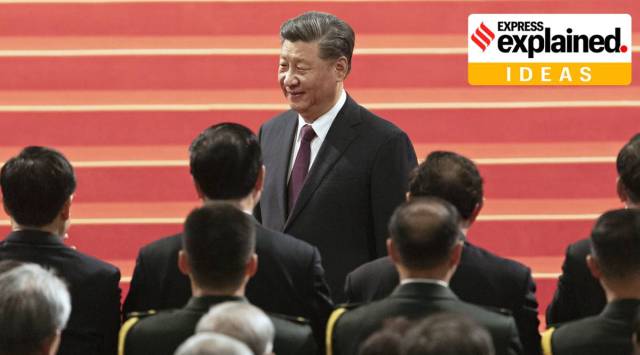Atmanirbhar China — how Beijing is becoming more self-reliant
Under the label of 'dual circulation', China's strategy of economic self-reliance has been sharpened by Covid pandemic, writes Shyam Saran.
 Over the past few years, China has been shifting from an investment and export-led growth strategy to one based on domestic consumption and services. (Bloomberg)
Over the past few years, China has been shifting from an investment and export-led growth strategy to one based on domestic consumption and services. (Bloomberg)The global pandemic has exacerbated the trend across the world wherein countries have moved away from globalisation and started looking inwards. In India, too, we have announced Atmanirbhar Bharat to signal a renewed stress on self-reliance and indigenous production.
However, what is interesting, according to former Foreign Secretary Shyam Saran, is that China, too, appears to have adopted its own brand of atmanirbhar economic strategy under the intriguing label of “dual circulation”.
Dual circulation is defined as “taking the domestic market as the mainstay while letting domestic and foreign markets boost each other”.
The term was first used at a Chinese Communist Party Politburo meeting held on May 14. It was described as a policy that would “fully bring out the advantage of its super-large market scale and the potential of domestic demand to establish a new development pattern featuring domestic and international dual circulations that complement each other”.
Over the past few years, China has been shifting from an investment and export-led growth strategy to one based on domestic consumption and services. Consumption has risen to 56 per cent of GDP today as compared to about 35 per cent a decade ago. Exports were 36 per cent of GDP in 2007 but constituted only 18 per cent in 2019.
There is a realisation that the US-China confrontation is structural and likely to persist irrespective of who occupies the White House next year. China would therefore have to rely more on domestic drivers of growth.
“One Chinese commentary urged that the new strategy should be approached with ‘the mindset of fighting a protracted war’, language that harks back to the Maoist era,” states Saran.
📣 Express Explained is now on Telegram. Click here to join our channel (@ieexplained) and stay updated with the latest
In a recent statement, President Xi Jinping has said that “dual circulation” is by no means a closed domestic loop and reaffirmed that opening up was a fundamental national policy.
What is also interesting is that the ambitious Belt and Road Initiative (BRI), Xi Jinping’s signature project, has barely been mentioned in the context of dual circulation. Reports indicate that as a result of the pandemic, the initiative has stalled in most countries and there are major cost over-runs and delays in implementation.
Also read | Explained Ideas: How India can force China to settle the border issue amicably
“The difficulties faced by the BRI may also be reinforcing the inward turn that the new strategy suggests,” states Saran. “China will soon be launching its 14th Five Year Plan, which will be deliberated upon by the Party Central Committee this October. We will then get a clearer picture of what China’s atmanirbhar strategy with Chinese characteristics looks like,” he concludes.
- 01
- 02
- 03
- 04
- 05






































